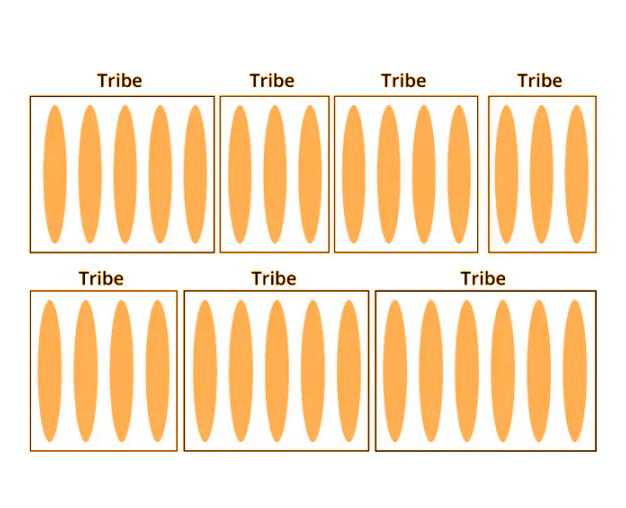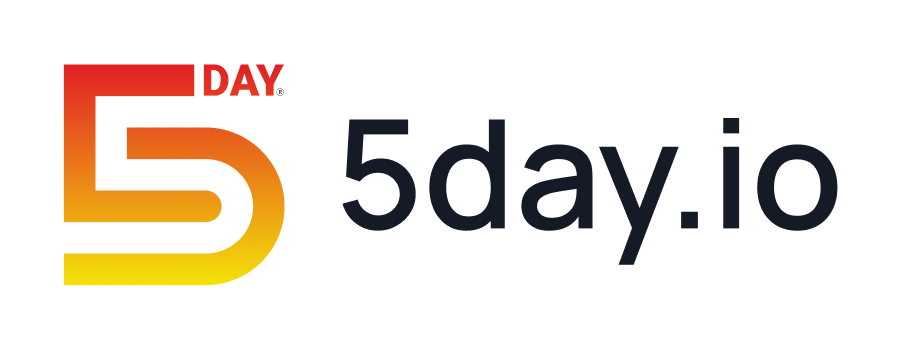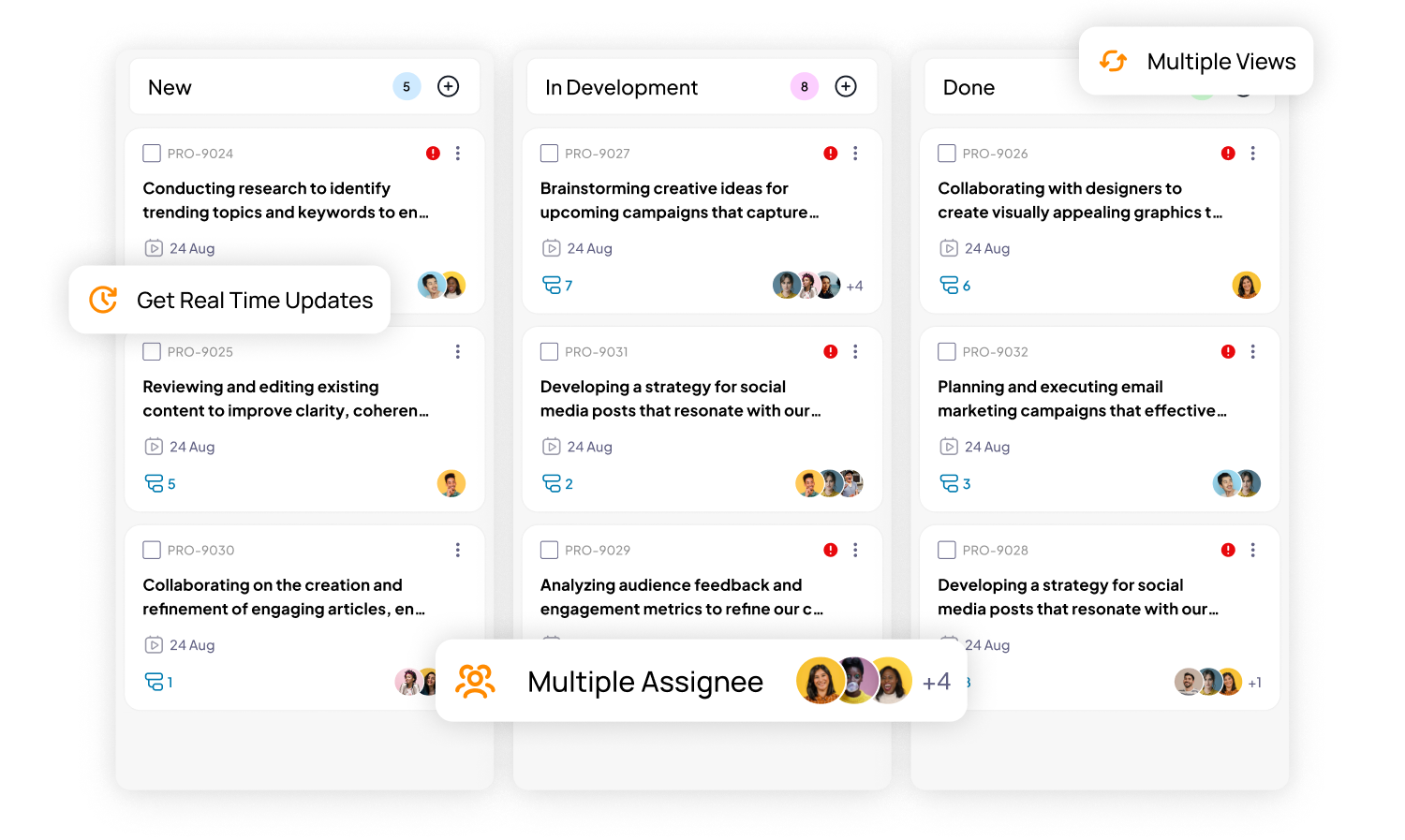Managing multiple teams in a product management organization is always a challenge. Each team is unique, ensuring alignment with shared goals, communication, and adaptive leadership.
Over the years, many agile frameworks have been introduced like SAFe, Nexus, LeSS, Scrum and DA. Spotify’s distinctive approach to structuring teams to elevate agility has been instrumental in their success. This methodology has since then become a benchmark for numerous tech firms, commonly referred to as the Spotify model.
Overview
The Spotify model is a people-driven, autonomous framework for scaling agile. This model highlights the pivotal roles of culture and network. This methodology uses Squads, Tribes, Chapters, and Guilds, whereas the foundation of this model is the squad, and it acts as the Scrum team.
Spotify, launched in 2008, quickly rose to prominence for its expansive and unique music library. From its modest beginnings, the company has grown impressively, now boasting a workforce of 1,600. Central to their success is their firm commitment to agile principles, culminating in their distinct strategy known as the Spotify Tribe.
While Spotify initially employed the scrum methodology during its early days with a smaller team, its expansion necessitated the adoption of agile scaling. Today, it efficiently manages 30 agile teams located in four cities across three time zones. Embracing this distinctive Agile Scaling Method has not only accelerated Spotify’s achievements but has also fostered a growth-oriented mindset among its employees.
Core elements of the Spotify model
Squad
At Spotify, Squads are key development units, resembling Scrum teams. These Squads, acting like mini startups, have the resources to create and launch products, adopting techniques like Scrum or Kanban.
Every Squad has a distinct, long-term mission, like enhancing the Android client or streamlining payment solutions. With a focus on their specific domain, they become experts, embodying the mantra, “Think it, build it, ship it, tweak it.”
While a squad doesn’t have a squad leader, it is guided by a product owner. This product owner determines the team’s work priorities but doesn’t dictate the methods they use to accomplish their tasks. Squads also benefit from an agile coach, guiding their evolution and enhancing their methodologies.
Team size: 6 to 12 individuals.

Tribe
A tribe consists of squads working on similar aspects, like the music player or backend infrastructure. Each tribe has a tribe lead who helps in creating a productive and innovative environment for the squads.
The squads in a tribe are in the same office and the tribe lead can collaborate across the squads. To maintain alignment, Dunbar number theory is applied, that suggests that most individuals can maintain connections with 100 people. This size limitation helps reduce bureaucracy, politics, and other inefficiencies.
Team Size: Maximum of 100 people

Chapter
A chapter consists of individuals with similar expertise within a specific tribe. A chapter lead is a line manager for chapter members and also supports them in their personal development and unique challenges. They serve as foundational pillars for the squads, ensuring best practices are set and adhered to by everyone involved in the tribe
Guild
Team members who are interested in a topic can form Guild. These are organic, wide-reaching ‘community of interest’ that spans the entire organization. While Chapters are tribe-specific, Guilds consist of everyone interested in a particular area. A Guild is a group of people that share common knowledge, tools, and best practices.
Core elements of the Spotify model

More autonomy and productivity
It focuses on self-management, an approach that fosters deep trust within the team. This builds mutual trust and respect among team members, also promoting a collaborative and efficient work environment.
The squad holds autonomy in their decision-making and has the choice to select their preferred working approach, ensuring team-wide alignment with the chosen methods. This allows squads to expedite their release cycles.
Collaboration and teamwork
This model creates a network that fosters communication across various silos and departments. Promotion of transparent communication allows fresh ideas to emerge, and also facilitates their spread and evolution. This collaborative environment lets ideas flow freely, promoting problem solving and sharing best practices.
Experimentation and Innovation
Spotify allocates 10% of its employee’s time to personal projects known as hacking time. This space of creativity leads to innovative ideas and solutions. This environment supports experimentation, viewing failures as continual improvement process.
Scaling agile
The growth of Spotify from a small startup to global leader can be attributed to its innovative agile approach. It is one of the best examples of successful implementation of agile methodologies, scaled to the size of a large enterprise.
Challenges
- Spotify’s agile method has been successful for them. but it’s not a one-size-fits-all solution.
- Every company has its own unique culture, so directly copying Spotify’s model might not work at other places.
- It isn’t an exhaustive system. Instead, it captures how most of their engineering teams functioned around 2012.
- This approach stands in stark contrast to structured methodologies like the Scaled Agile Framework (SAFe), which has clear certification and training structures.
Conclusion
Scaling agile approaches can be challenging. The Spotify model is a guiding template for organizations aiming for speed, autonomy, and purpose. While the Spotify agile model provides a well-documented case of a successful implementation, the real lesson isn’t in replicating the model. Instead, it’s about drawing inspiration from the strategies and tailoring them to suit your organization’s unique needs.
Group your Squads into Tribes, establish Guilds and Chapters, and ensure transparent product decision-making across your organization.








